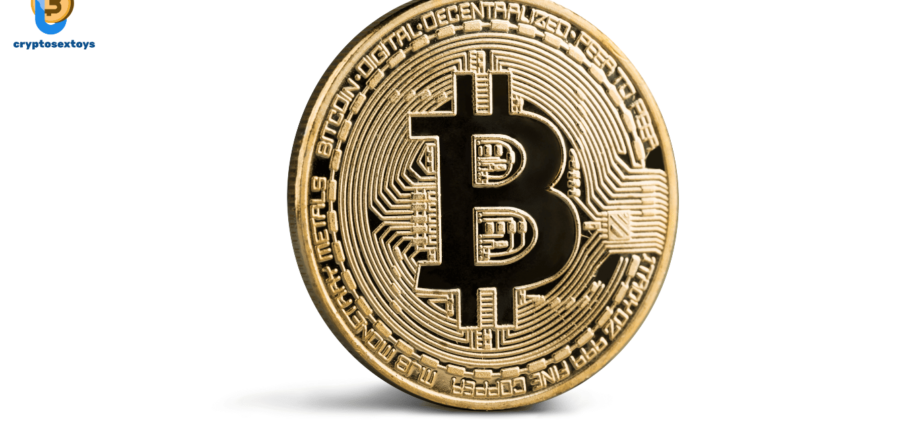I. What is Bitcoin?
Bitcoin (BTC) is a digital currency, a form of cryptocurrency intended to function as a medium of exchange and a unit of value, operating independently from any single individual, organization, or authority. As a result, it eliminates the necessity for third-party participation in financial transactions. It is distributed to blockchain miners as a reward for validating transactions and can be acquired through various cryptocurrency exchanges.
History and origins of Bitcoin
Bitcoin was created in 2009. It was introduced in a whitepaper titled “Bitcoin: A Peer-to-Peer Electronic Cash System,” published by an individual or group of individuals using the pseudonym Satoshi Nakamoto in October 2008. This whitepaper outlined the concept and the underlying technology of Bitcoin.
The true identity of Satoshi Nakamoto remains unknown, and their anonymity has been maintained throughout the history of Bitcoin. Despite numerous theories and speculations, the creator of Bitcoin has never been conclusively identified. Satoshi Nakamoto continued to be involved in the development of the cryptocurrency and its community until around 2010 but gradually faded from public view and eventually stopped communicating with the Bitcoin community. The project has since been maintained and developed by a decentralized group of developers and contributors from around the world.
Bitcoin’s creation was a response to the financial and economic challenges of the time, including the global financial crisis of 2008. It aimed to provide a decentralized, peer-to-peer digital currency that could operate independently of traditional financial institutions and governments. The release of the Bitcoin software in January 2009 marked the beginning of the Bitcoin network, with the first Bitcoin block, known as the “genesis block,” mined by Satoshi Nakamoto. This marked the birth of the Bitcoin blockchain and the start of a new era in digital finance.
Bitcoin vs. traditional currencies

Here’s a table comparing Bitcoin and traditional currencies across various aspects:
| Aspect | Bitcoin | Traditional Currencies |
| Nature | Digital, decentralized | Physical and digital |
| Issuer | No central authority | Government and central banks |
| Centralization | Decentralized network | Centralized control |
| Supply | Capped at 21 million coins | Flexible, subject to inflation |
| Transactions | Pseudonymous, recorded on blockchain | Traceable through financial institutions |
| Security | Cryptographically secured, decentralized | Reliant on financial institutions |
| Portability | Easily transferred globally | May involve fees and regulations |
| Value Volatility | High price volatility | Generally more stable |
| Acceptance and Regulation | Growing, subject to varying regulation | Widely accepted, regulated by governments |
| Purpose | Store of value, cross-border transfers | Everyday transactions, settlement |
| Ownership | Controlled with private keys | Held in bank accounts, cash |
| Reversibility | Irreversible once confirmed | Complex processes for reversals |
| Transparency | Public ledger (blockchain) | Varies, often opaque |
| Cross-border Transactions | Efficient and low-cost | May involve fees and delays |
| Inflation/Devaluation | Deflationary (limited supply) | Subject to inflation |
How to get bitcoins
- Buy Bitcoins on Cryptocurrency Exchanges:
- Cryptocurrency exchanges are online platforms where you can purchase, sell, and trade Bitcoin and other cryptocurrencies. Some popular exchanges include Coinbase, Binance, Kraken, and Bitstamp.
- To buy Bitcoin on an exchange, you typically need to create an account, complete identity verification (KYC), link a payment method (bank account, credit/debit card), and then place an order to purchase Bitcoin.
- Use Bitcoin ATMs:
- Bitcoin ATMs are physical machines that allow you to buy Bitcoin with cash or a credit/debit card. They are available in various locations, such as shopping malls and convenience stores.
- To use a Bitcoin ATM, you insert cash or your payment card, provide a Bitcoin wallet address, and the machine will dispense the equivalent amount of Bitcoin to your wallet.
- Peer-to-Peer (P2P) Platforms:
- P2P platforms like LocalBitcoins and Paxful connect buyers and sellers directly. You can find individuals willing to sell Bitcoin in your preferred payment method, such as bank transfer or PayPal.
- P2P platforms often have escrow services to ensure a secure transaction.
- Mining:
- Bitcoin mining involves using specialized hardware to solve complex mathematical puzzles on the Bitcoin network. Miners are rewarded with newly created Bitcoins and transaction fees for securing and verifying transactions.
- Mining is resource-intensive and may not be practical for most individuals due to the high costs involved.
- Earn Bitcoin:
- Some websites, businesses, and freelancers offer payments in Bitcoin for products, services, or work. You can earn Bitcoin through tasks, jobs, or by selling items in exchange for the cryptocurrency.
- Bitcoin Faucets:
- Bitcoin faucets are websites or apps that dispense small amounts of Bitcoin for free. While the amounts are tiny, they can be a way to get started with Bitcoin.
- Receive Bitcoin as a Gift or Donation:
- You can receive Bitcoin from friends, family, or charitable donations. To receive Bitcoin, you’ll need a Bitcoin wallet address to share with the sender.
- Participate in Airdrops and Giveaways:
- Some projects distribute free Bitcoin or other cryptocurrencies as part of promotional campaigns. Be cautious of scams and ensure the legitimacy of such offerings.
- Work in the Cryptocurrency Industry:
- Some jobs and opportunities in the cryptocurrency and blockchain industry may offer payment in Bitcoin.
- Cryptocurrency Rewards Programs:
- Some services and apps reward users with small amounts of Bitcoin or other cryptocurrencies as part of loyalty or referral programs.
When acquiring Bitcoin, it’s important to exercise caution and ensure you are using reputable and secure methods. Additionally, storing your Bitcoin in a secure wallet is crucial to protect your investment. Hardware wallets and software wallets are common options for secure storage. Always conduct due diligence and be aware of the potential risks associated with cryptocurrency transactions.
IV. How Is Bitcoin Used?

Bitcoin, originally conceived as a peer-to-peer payment method, has transcended its initial purpose. The evolution of Bitcoin’s use cases can be attributed to its soaring value and the ever-competitive landscape of blockchain and cryptocurrencies.
Payment:
To harness the power of Bitcoin as a payment method, you’ll require a cryptocurrency wallet. These wallets serve as your gateway to the blockchain and store the private keys necessary for conducting transactions. Bitcoin is now accepted as a valid means of payment for an array of goods and services at numerous brick-and-mortar stores, retailers, and online shops.
Brick-and-mortar establishments that embrace cryptocurrencies often proudly display signs proclaiming “Bitcoin Accepted Here.” Transactions in these settings are seamlessly executed via specialized hardware terminals or by sharing wallet addresses using QR codes and touchscreen apps. For online businesses, integrating Bitcoin into their array of payment options alongside credit cards and PayPal has become a straightforward process.
Investing and Speculating
The rise of Bitcoin’s popularity has attracted the attention of investors and speculators alike. Between 2009 and 2017, the emergence of cryptocurrency exchanges simplified the buying and selling of Bitcoin. As prices steadily climbed, demand surged, culminating in 2017 when Bitcoin’s price breached the $1,000 mark. Many anticipated that Bitcoin’s value would continue its ascent, leading to a wave of long-term investment.
Traders, on the other hand, ventured into the world of cryptocurrency exchanges, engaging in short-term trading strategies. This contributed to the cryptocurrency market’s explosive growth.
However, the journey of Bitcoin has not been without turbulence. In 2022, the price of Bitcoin experienced significant volatility. March 2022 saw Bitcoin reach dizzying heights at $47,454, but by November of the same year, it had plummeted to $15,731. The year 2023 brought some recovery, with Bitcoin briefly touching $31,474 before retracing below $30,000. The downturn in Bitcoin’s value was influenced by broader market turmoil, including concerns related to inflation, rising interest rates, supply chain disruptions caused by the pandemic, and the conflict in Ukraine. Furthermore, certain prominent cryptocurrencies experienced sharp declines, and a significant exchange’s instability raised questions about the overall resilience of digital currencies.
As Bitcoin continues to make headlines and redefine the financial landscape, its diverse applications and the implications of its price fluctuations will remain a topic of keen interest for many.
| Next Up In Investing |
| How Does Bitcoin Work |
| How to Read Bitcoin Charts |
| How Many Bitcoins for a Dollar? |
Risks of Investing in Bitcoin

In recent years, Bitcoin has magnetized a plethora of speculative investors, enticed by its meteoric price ascension. As of December 31, 2019, Bitcoin was valued at $7,167.52, but just one year later, it had soared by over 300% to an impressive $28,984.98. The cryptocurrency continued its ascent, reaching an all-time high of $68,990 in November 2021, only to experience a subsequent dip, stabilizing around the $40,000 mark. As history attests, Bitcoin’s price remains a tempestuous journey, marked by undulating highs and lows.
Bitcoin’s All-Time High
The zenith of Bitcoin’s price was achieved in November 2021, with the currency reaching a remarkable $68,990.
For many, Bitcoin is more than a medium of exchange—it’s a tantalizing investment opportunity. Nevertheless, its intangible nature and the absence of guaranteed value underpin a host of inherent risks. Regulatory bodies such as the Securities and Exchange Commission (SEC), the Financial Industry Regulatory Authority (FINRA), and the Consumer Financial Protection Bureau (CFPB) have issued a chorus of investor alerts, underscoring the perils associated with Bitcoin investment.
Regulatory Risk
The absence of standardized cryptocurrency regulations raises pertinent questions about the durability, liquidity, and universal acceptance of digital currencies.
Security Risk
The majority of Bitcoin holders do not amass their tokens through mining; instead, they navigate the cryptocurrency marketplaces. These online platforms, known as cryptocurrency exchanges, operate exclusively in the digital realm, making them susceptible to cyber threats, malware, and operational glitches.
Insurance Risk
Unlike traditional financial assets, Bitcoin and cryptocurrencies remain unguarded by entities like the Securities Investor Protection Corporation (SIPC) or the Federal Deposit Insurance Corporation (FDIC). Some exchanges offer third-party insurance, but these protections are often limited in scope.
Fraud Risk
While the blockchain technology inherent in Bitcoin bolsters security, potential avenues for fraudulent activities persist.
Market Risk
Bitcoin’s value, like any other investment, is subject to fluctuations. Its history is punctuated by dramatic price swings, fueled by market sentiment and impactful news events. Notably, the Consumer Financial Protection Bureau (CFPB) reports a staggering 61% price drop in a single day in 2013 and a colossal 80% plummet in 2014.
Regulating Bitcoin
Efforts to regulate Bitcoin have proven to be a complex endeavor. The current administration seeks to strike a balance between implementing regulations to curb illicit activities while nurturing the cryptocurrency industry’s economic potential. President Biden has expressed his commitment to preventing the unlawful use of Bitcoin while concurrently supporting its development. The United States has been notably active in regulating cryptocurrencies and targeting their illicit usage overseas, including the sanctioning of cryptocurrency exchanges and individual wallets, as well as the recovery of crypto payments made to criminal entities.
As Bitcoin and the broader cryptocurrency ecosystem continue to evolve, the regulatory landscape will undoubtedly undergo transformations, with new laws and regulations reshaping the landscape.
What is a bitcoin wallet? Protect your Bitcoin
Once you’ve taken the plunge into the realm of Bitcoin, the next step is securing your newfound digital treasure within a Bitcoin wallet. Yet, the world of digital wallets is diverse, and not all wallets are created equal. You’ll encounter two primary categories: hot wallets and cold wallets, each with its own set of attributes and security considerations.
Hot Digital Wallet
A hot wallet is akin to an open gateway to the digital world, as it remains perpetually connected to the internet. This real-time accessibility makes it the go-to choice for those who wish to employ their Bitcoin in everyday transactions or engage in trading activities. Hot wallets typically reside on devices like computers, smartphones, tablets, or within cryptocurrency exchange platforms.
Your hot wallet provides you with a set of keys—critical to its security. These keys act as digital guardians, ensuring the safety of your cryptocurrency. However, there’s a catch; should you misplace these keys, your crypto assets could be forever out of reach. Furthermore, the vulnerable nature of digital devices leaves your crypto exposed to potential loss due to computer malfunctions, glitches, and even malicious hacks. Hence, it’s a common practice to store only a modest amount of cryptocurrency within a hot wallet.
A noteworthy caveat is that when your Bitcoin rests within a cryptocurrency exchange, it becomes inherently less secure. This is because the exchange retains ownership of the keys, not the user. In the unfortunate event of an exchange being compromised by a hack or experiencing server malfunctions, the risk of losing your entire cryptocurrency holdings looms large.
Cold Wallet
In stark contrast, a cold wallet operates in splendid isolation, entirely disconnected from the internet. This deliberate disconnect shields it from the perils of hacks and hardware failures. Typically embodied by USB devices, cold wallets are entrusted with the sacred task of safeguarding your private keys, ensuring your Bitcoin remains securely under lock and key.
Cold wallets offer yet another layer of security, and among these, the paper wallet reigns supreme. This supremely secure option can be generated from a cold wallet website, creating a unique pair of public and private keys. The printed keys can be further fortified by lamination and safely stored in a deposit box or secure vault. Without these printed keys, access to your wallet remains an enigma, beyond the reach of prying hands.
Conclusion:
In conclusion, we’ve covered essential points about Bitcoin and cryptocurrencies, from their foundations to current trends. As you consider the future of finance, remember the decentralized power and innovation they bring. Embrace the evolving landscape and explore the limitless possibilities that Bitcoin and cryptocurrencies offer. The journey has just begun; let’s shape the future together.
source: https://insights.sei.cmu.edu/blog/what-is-bitcoin-what-is-blockchain/

